#maruyama masao
Text
The Pluto anime is here!

At 4 PM Japan Standard Time, October 26, 2023, a brand new Astro Boy series debuted! The anime adaptation of the Pluto manga authored by Naoki Urasawa!
All 8 episodes have been released at one time, so watch it at your own leisure! Each episode is about 1 hour, each covering 1 volume from the manga.
Enjoy this experience everyone!
You can watch Pluto on Netflix:
257 notes
·
View notes
Text
Head's up! - For a limited time, NHK World is streaming a new free 28 minute documentary (in English!) on anime producer Masao Maruyama as part of their ANIME MANGA EXPLOSION series. Maruyama's been a part of the industry for years, joining Studio Madhouse in 1972 and fostering many big-name talents there, such as the late Satoshi Kon. Give it a watch at the link above!
#NHK World#Masao Maruyama#anime industry#documentary#MADHOUSE#links out#70s anime#80s anime#90s anime
32 notes
·
View notes
Text
#anime#animation#sakuga#anime industry#tatsuya ishihara#george wada#manabu otsuka#masao maruyama#mitsuo iso#kyouko kotani#mizue ogawa
47 notes
·
View notes
Text
Just finished the Pluto anime. Could not have asked for anything more. Studio M2, Genco, Masao Maruyama, and the entire staff did a masterful job adapting one of the greatest manga ever written.
I'm glad I got to experience this masterpiece in anime form.
#Pluto#Pluto anime#Pluto manga#Naoki Urasawa#Masao Maruyama#Astro Boy#Studio M2#Genco#Nothing is born from hatred
27 notes
·
View notes
Text
youtube
PLUTO | Official Teaser
PLUTO will stream on Netflix worldwide on October 26, 2023. The anime will consist of eight 1-hour long episodes.
Cast additions

Hiroki Yasumoto as Mont
Koichi Yamadera as North No. 2
Hidenobu Kiuchi as Brando
Rikiya Koyama as Hercules
Mamoru Miyano as Epsilon
Toshihiko Seki as Pluto
Previously announced cast members
Shinshū Fuji as Gesicht
Yōko Hikasa as Atom
Minori Suzuki as Uran
Staff
Director: Toshio Kawaguchi
Storyboard: Hiroyuki Okiura (Episode 1)
Music: Yūgo Kanno
Original Creator: Naoki Urasawa, Osamu Tezuka
Character Design/Supervising Animation Director: Shigeru Fujita
Art Director: Chikako Shibata
Animation Director: Kazunori Aoki, Itaru Saito
Sound Director: Masafumi Mima
CGI Director: Takahiro Miyata
Director of Photography: Mitsuhiro Sato
Executive Producer: Masao Maruyama, Taro Maki, Yuji Yamano
Creative Advisor: Naoki Urasawa
Animation Production: Studio M2
Production Producer: GENCO
#Pluto anime#Pluto#Pluto Netflix#Astro Boy#Naoki Urasawa#Takashi Nagasaki#Osamu Tezuka#Studio M2#Genco#Netflix#Anime#TV anime#Anime Expo#Anime Expo 2023
394 notes
·
View notes
Text
Today’s translation #747
Febri vol. 40, Hiramatsu Tadashi's interview
Part 10.
-- Your first job as Chief Animator Director! So you weren't Chief Animation Director for Parasyte?
Hiramatsu: That's correct. In case of Parasyte, I supervised around 10 cuts per episode, but these were scenes that were drawn separately, as we wanted to highlight and used them in the trailer. Also for Abenobashi, I wasn't Chief Animation Director.
-- That show had Animation Director changing every episode, right?
Hiramatsu: Shows made by Gainax, in general, usually use this formula. Because, the stance there is that it's fine if the character change completely every few episodes (laugh). On the contrary, MAPPA's founder Maruyama Masao-san thinks that a series should be consistent, so this time I worked as Chief Animation Director.
-- Was it difficult?
Hiramatsu: Yeah, it was. Every week, I had to supervise around 40-50 cuts, so I was so busy I was on the verge of fainting. On top of that, I can't just lightly correct the outline, or face parts - I'm the type that feel the need to re-drawn the whole thing. So, basically around half of those 40-50 cuts have key animation frames drawn by me. The truth is that the job of a Chief Animation Director in essence should be about correcting only the parts that need correcting using as little energy as possible, so the whole thing doesn't look like it was corrected that much at first glance, but watching it on the screen, everything still looks nice and unified. Thinking about it like that, my way of working is quite wrong (laugh). But I enjoy drawing key animation frames a lot, so I think that it's just how it is for me.
13 notes
·
View notes
Text
Just realised that PLUTO is coming to Netflix very soon! I haven't even read the manga yet!

Trailer: https://youtu.be/-NZJkzcvAtU?si=VNlrxzoJ_efd6dUx
The 8-episode series is led by Masao Maruyama, the founder of MAPPA animation studio, and also a member of the original production team for Astro Boy. (via Hypebeast)
21 notes
·
View notes
Text
Legendary Creator Yoshitaka Amano Featured In NHK-World Japan's Anime Manga Explosion
Legendary Creator Yoshitaka Amano Featured In NHK-World Japan's Anime Manga Explosion
#Anime #VideoGames #FinalFantasy #Yatterman #ヤッターマン
Last month, NHK World Japan streamed a new documentary in part of its Anime Manga Explosion Program, focusing on Studio M2’s Masao Maruyama. This time, we’re getting a brand-new documentary focusing on Legendary Creator and Character Designer, Yoshitaka Amano, best known for his iconic work such as Yatterman, Casshan, and Final Fantasy.
Image Credit: Square Enix, Yoshitaka Amano
In the newest…

View On WordPress
#Anime#Anime Manga Explosion#ヤッターマン#Casshan#Exception#Final Fantasy#Guin Saga#NHK World-Japan#Square Enix#Time Bokan#Video Games#Yatterman#Yoshitaka Amano#ファイナルファンタジー
2 notes
·
View notes
Text
Urasawa's Pluto is the last manga i bothered reading, and the anime that released this year is so phenomenal that for a minute i was like "damn should i start watching more anime?"
i would never, but it's a testament to Masao Maruyama's talent that he almost got me.
#i know better than to go down that road it will just depress me#i am just going to re-read Astro Boy like a normal person
3 notes
·
View notes
Text
PLUTO ANIME DEBUTS ON OCTOBER 26, 2023; NEW TRAILER UNVEILED AT ANIME EXPO 2023
youtube
Source: Netflix Anime (YouTube)
A second trailer for the long-awaited Pluto anime was unveiled at Anime Expo 2023 in Los Angeles, California on July 1, 2023.
The trailer revealed the release day for the Pluto anime: October 26, 2023.
A few character voices can be heard for the first time, including Gesicht, Atom, and Uran.
258 notes
·
View notes
Text
Animation Night 134: Rintaro’s OVAs
Hi everyone! Welcome back to Animation Night.
Tonight we’re coming back to Rintaro, or りんたろう (or Shigeyuki Hayashi, but the pseudonym is near universal). This time I even found a picture of him!
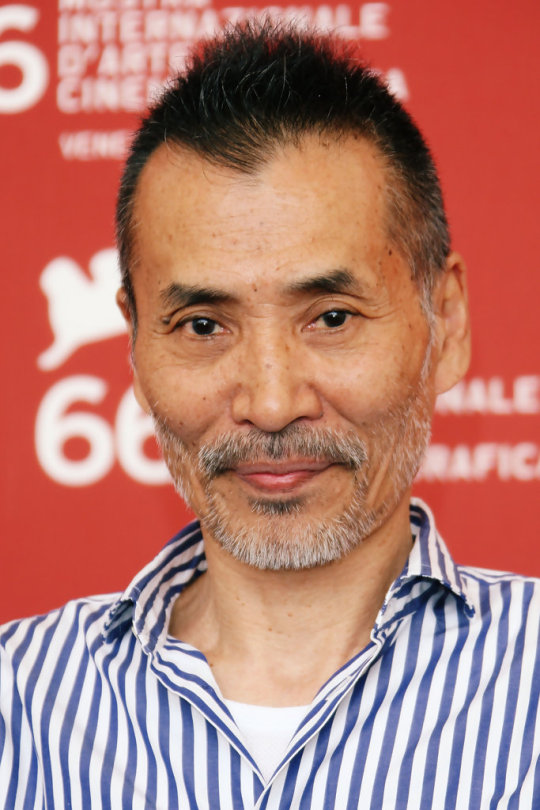
Rintaro one of the oldest of the anime old school to still be alive. He joined the anime industry as an inbetweener on Toei’s landmark film The Legend of the White Snake in 1958 and Astro Boy - but in his own right, he’s also a co-founder of Madhouse alongside people like Osamu Dezaki (Animation Night 95), Yoshiaki Kawajiri (25, 67) and Masao Maruyama (later, founder of MAPPA). He directed such classics as Space Captain Harlock (1978) and Galaxy Express 999 (AN62), he helped create the network of connections that led to Akira, he did a chapter of Tezuka’s Phoenix (AN80) he was still going strong in the 2000s with Metropolis (53).
He is, in short, one of the most significant directors in anime. And yet, to actually find out much about him beyond the films he’s made and the places he’s worked is surprisingly hard. Even in interview, his answers are a little vague. But then, the anime and manga industry are full of reclusive, shy creators. So let’s look at the films...
...or rather, let’s look at the OVAs! Look at them with our mouth eyes.
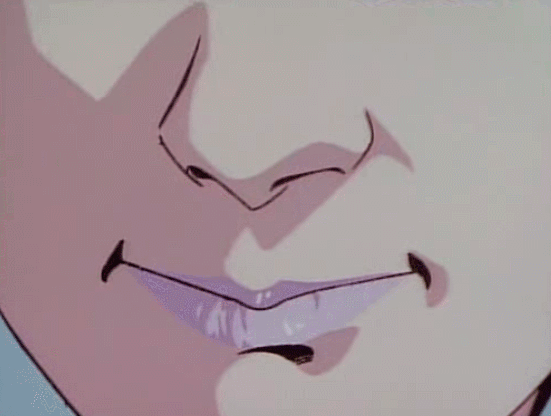
Pop.
Rintaro spent the late 70s and early 80s working not at Madhouse but at Toei, which was a chance for him to spread his wings outside of the shadow of Dezaki. This was the Captain Harlock era, and the Galaxy Express 999 era, the latter’s remarkable film building the important connection with Yoshinori Kanada and his ‘liquid fire’ effects.
In 82, after adapting renowned satirical novel I Am A Cat for a TV special, Rintaro came back to Madhouse - around the time of Dezaki’s Space Adventure Cobra. There, he would direct Genma Taisen (Harmageddon), which can in many ways be called the prototype for Akira, setting up the power trio of Otomo, Koji Morimoto and Takashi Nakamura. I’ll be screening that for Animation Night before too long, so more on that then (or just read Watzky’s article!).
As Dezaki stepped back, Madhouse entered the era that made it famous, what we could call the ‘auteur era’. Riding the OVA boom, they animated dozens of sci-fi films, OVAs and TV shows by a variety of directors. Their style tended to emphasise static detail with bursts of complex animation; chiaroscuro night settings with bright lights driven by background animation. Rintaro was one of their stars.
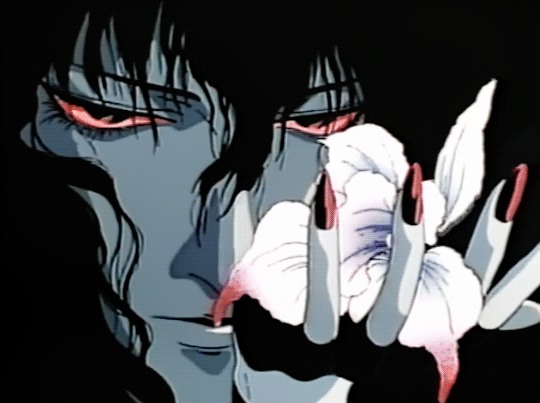
So this evening we’re going to pick out two of his works from this period in the new OVA format...
Let’s start with Bride of Deimos (悪魔 (デイモス)の花嫁). (Unfortunately I can’t display ruby text on Tumblr, but imagine that デイモス is written above the first two kanji.)
Bride of Deimos was an interesting beast: a shōjo horror manga by writer Etsuko Ikeda and illustrator Yuuho Ashibe with a a very classic-shōjo, Year 24 Group-esque visual style. (Beyond ‘authors of this manga’, it seems almost impossible to find out anything about either.) If I’m reading the plot summary right, revolves around a high school girl called Minako, who is the reincarnation of a demon Venus, the twin sister of an incestuous demon named Deimos; she is reincarnating because was executed by the demons for her incest crimes but the original soul seems to be out there somewhere? Deimos wants to bring Minako back to the underworld so Venus can possess her body again; Minako would prefer not to, and she’s got a lot of jealous people and suitors to fend off in the meantime thanks.
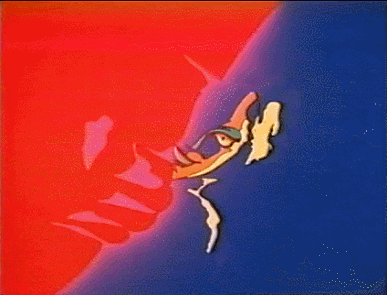
The manga ran a solid 26 years, from 1974 all the way to 1990. Rintaro could obviously not adapt something of that scope, and his 1988 OVA excerpts just one chapter from the whole epic for a half-hour OVA. It revolves around a brother-sister pair, the brother raising orchids and taking care of a disabled sister, who are both very yandere over each other. Into this whole mess stumbles Minako.
So expect a lot of very gothic imagery; it’s worth noting that Madhouse had adapted Vampire Hunter D just a few years earlier, and I think you can see the influence in its character design. There’s at least one very elaborate sequence of background animation which you can see above; unfortunately sakugabooru do not seem to know who animated it.
And then, just a few years later, we have Teito Monogatari (帝都物語), known in English as Doomed Megalopolis.
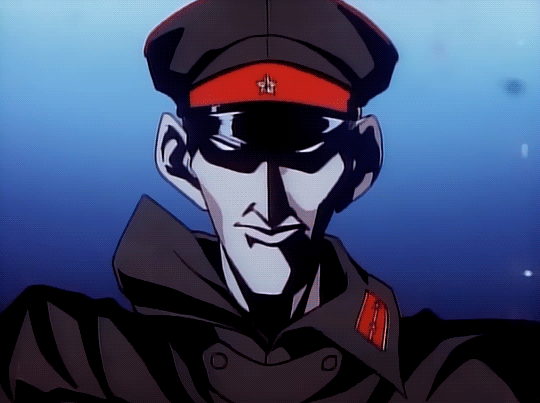
The original Teito Monogatari (1983-7) was a sprawling historical epic serial novel crossing basically the entire 90s, following the occult works of an immortal warlord of the Taira clan who led a failed rebellion against the central government (the same Taira clan whose fall is chronicled in the Heike Monogatari, c.f. Animation Night 91) and has now become a ghost serving the same empire. In the present, he is succeeded by Yasunori Katō, a former soldier in the imperial Japanese army who is in fact a vengeful oni working for 90 years to bring about the downfall of the Japanese Empire, bringing him into conflict with a long list of historical figures...
His ruinous ambitions bring him into conflict with some of 20th century Japan's greatest minds including industrialist Eiichi Shibusawa, onmyoji Abe no Seimei's descendant Yasumasa Hirai, authors Koda Rohan and Izumi Kyoka; physicist Torahiko Terada, and author Yukio Mishima. The resulting conflict, involving science, magic and politics; spans 90 years of Japan's history.
The story begins near the end of the Meiji period and ranges through the rest of the century. It reinvents major events such as the Great Kantō earthquake [in the story, the work of Katō and his allies], the founding of Japan's first subway, the February 26 Incident, the firebombing raids, the signing of the 1960 US Security Pact, and the ritual suicide of Yukio Mishima. The narrative finally reaches its climax in 1998, the 73rd year of a fictional Shōwa period.
The overall structure of the narrative seems to be that Katō comes up with various dastardly plans to destroy Tokyo, and is stopped by these historical figures (and original characters), deferring the destruction of Tokyo to later and later dates. In that regard it seems to fit the onryō mode, where the monster really is a victim of something terrible but nevertheless needs to be stopped. How that reflects on the subject of nationalism it raises so centrally, I’m not sure, and I’m curious to find out! e.g. it’s curious to me that it’s the villain Kato, despite fighting on behalf of indigenous people crushed by Japan, who dresses in the sinister, Nazi-like uniform of an Imperial Japanese Army officer.
This story proved wildly popular, and caused a resurgence of interest in mysticism, such as onmyōdō and feng shui, as well as the classic figure of the oni. It inspired numerous adaptations (one by Takashi Miike!) and subsequent works in the same vein in literature and manga.
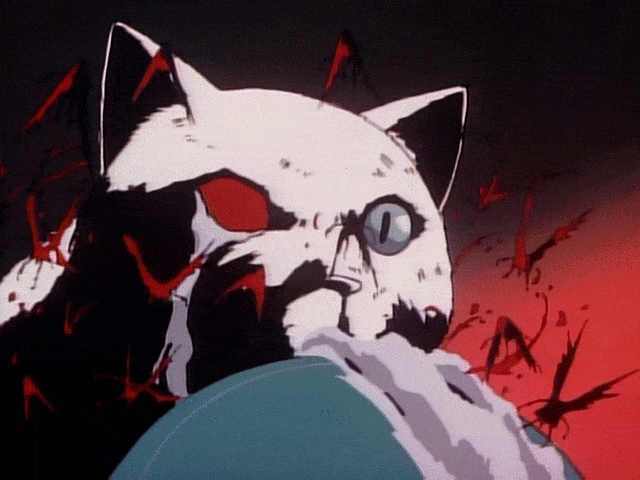
By the time Rintaro got to it, there had already been one successful tokusatsu adaptation of the first four chapters in 1988 by Toho, which had received wide acclaim. There had also been a certain OVA called Urotsukidōji, discussed back on Animation Night 69, which proved that sex and violence were very in - and as a result, this OVA went a lot harder than earlier Rintaro works or indeed previous adaptations of Teito Monogatari. Hoping to distinguish his take from previous adaptations, Rintaro emphasised the supernatural aspects - the things it was possible to display with elaborate effects animation. And thus animators like Tatsuyuki Tanaka provided suitably gruesome imagery.
The series spans four episodes, each about forty minutes, all overseen by Rintaro but directed respecitively Kazuyoshi Katayama, Koichi Chigira, Kazunari Kume and Masashi Ikeda. Like Toho’s take, it focuses on the first four chapters, spanning the period 1912-1928, in which the Meiji government was rapidly industrialising Japan and transforming it into a colonial power to stand against the Europeans; not long before the story starts, Japan had annexed Korea in 1910. Beyond his earthquake shenanigans, Katō schemes to possess a girl called Yukari Tatsumiya and her daughter Yukiko. A full-on wizard war ensues.
And I think that’s enough time writing. So, if you will join me tonight, we’ll be watching Bride of Deimos followed by all four episodes of Teito Monogatari (Doomed Megalopolis)! Starting shortly on twitch.tv/canmom - hope to see you there!
12 notes
·
View notes
Text
To celebrate Masao Maruyama's involvement in the upcoming Pluto anime, they'll be screening episode 21 of Jetter Mars!
2 notes
·
View notes
Text

5년만에 돌아온 『리버사이드 랑데뷰』의 포스터를 만들었습니다. 이번에는 삼각지의 멜로디바 에코에서 3월 25일 저녁 🌃🍸🌉
Poster design for the 『Diggin' for Gold: Riverside Rendez-Vous』, a series of DJing events organized by Beatball Music @beatballmusic in cooperation with Echo Seoul.
The ‘Riverside’, as a location, held a unique meaning for Seoul in the 80s. A new highway was constructed by the riverside, and new hotel buildings were built around it. Illustrator Hiroshi Nagai designed many record labels in Japan, with the '80s City and Summer’ theme. I designed this poster as an homage to his works, to recall the East Asian romanticism of this era.
— Atsushi Sano From Japan (Stardish)
— Masao Maruyama From Japan (Dessinée Inc.)
— Jonathan Blue Seagull From South Korea (Personal Shopper)
From 9PM on Saturday March 25th, 2023
2F, 210-1, Hangang-daero, Yongsan-gu, Seoul, South Korea
4 notes
·
View notes
Text
PLUTO Anime Adaptation from Naoki Urasawa and Osamu Tezuka

PLUTO, the award-winning manga from Naoki Urasawa and Osamu Tezuka, has been finally adapted into an anime! Based on Tezuka's legendary manga Astro Boy, the series will stream on Netflix in 2023, take a look at this series with this 4-minute sneak peek.
The Pluto manga is Urasawa and producer Takashi Nagasaki's seinen drama re-imagining of the world depicted in Osamu Tezuka's manga Astro Boy. The series ran in Shogakukan's Big Comic Original magazine from 2003 to 2009, and it has eight compiled book volumes. The manga has been translated and published in 20 countries including France and the United States. Viz Media, which released the manga in North America, describes the story:
In a distant future where sentient humanoid robots pass for human, someone or something is out to destroy the seven great robots of the world. Europol's top detective Gesicht is assigned to investigate these mysterious robot serial murders - the only catch is that he himself is one of the seven targets.
GENCO's booth at the MIFA film market at the 2017 Annecy International Animation Film Festival had listed that the manga was getting an anime adaptation, but the anime was not officially announced at the time. According to GENCO then, Studio M2 was producing the anime. Masao Maruyama, who is the representative director at M2, served as producer for anime adaptations of Urasawa's Monster, Master Keaton, and Yawara! manga when he worked at Madhouse Studios.
Read the full article
2 notes
·
View notes
Text
youtube
PLUTO | Official Trailer
PLUTO will stream on Netflix worldwide on October 26, 2023. The anime will consist of eight 1-hour long episodes.

Key visual
Cast additions
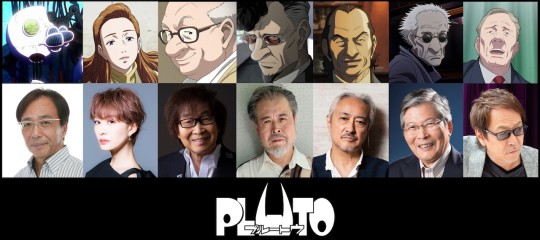
Hideyuki Tanaka as Brau-1589
Romi Park as Helena
Toshio Furukawa as Professor Ochanomizu
Eizou Tsuda as Dr. Tenma
Kazuhiro Yamaji as Professor Abullah
Michio Hazama as Duncan
Kenyuu Horiuchi as President Alexander
Previously announced cast members
Shinshū Fuji as Gesicht
Yōko Hikasa as Atom
Minori Suzuki as Uran
Hiroki Yasumoto as Mont
Koichi Yamadera as North No. 2
Hidenobu Kiuchi as Brando
Rikiya Koyama as Hercules
Mamoru Miyano as Epsilon
Toshihiko Seki as Pluto
Staff
Director: Toshio Kawaguchi
Storyboard: Hiroyuki Okiura (Episode 1)
Music: Yūgo Kanno
Original Creator: Naoki Urasawa, Osamu Tezuka
Character Design/Supervising Animation Director: Shigeru Fujita
Art Director: Chikako Shibata
Animation Director: Kazunori Aoki, Itaru Saito
Sound Director: Masafumi Mima
CGI Director: Takahiro Miyata
Director of Photography: Mitsuhiro Sato
Executive Producer: Masao Maruyama, Taro Maki, Yuji Yamano
Creative Advisor: Naoki Urasawa
Animation Production: Studio M2
Production Producer: GENCO
#Pluto anime#Pluto#Pluto Netflix#Astro Boy#Naoki Urasawa#Takashi Nagasaki#Osamu Tezuka#Studio M2#Genco#Netflix#Anime#TV anime
128 notes
·
View notes
Text
Today's translation #673
Yuri!!! on Life official guidebook, Skating animation, Abiko Eiji x Tatenaka Junpei
Part 7.
-- What do you think the experience of working on this project gave you, Abiko-san?
Abiko: At first, I was working in pencil on paper, but later I myself made a request to be able to work digitally, and in the middle of working on animation of episode 1. I started using a tablet to work. At first, I was drawing on paper while looking at two screens - one with a CGI footage of the camerawork and one playing Miyamoto-sensei's choreography. But I couldn't draw directly what I saw on those screens, so there was often a slight shift there in animation [compared to the reference footage]. So I had a talk with [MAPPA's CEO at that time, and now the President of the Board of Directors, Maruyama Masao] about how maybe if I could draw directly on top of the reference footage, that would help to get rid of that shift. I meant it as a half-joke, but he agreed to that. And I've got the necessary equipment in no-time.
Tatenaka: That was a surprise to me.
Abiko: He's a very capable man, isn't he (laugh). I'd never worked using digital technique before, but I've learned quite a bit, as I was working - I think, I can make a good use of those skills in my future work, too.
12 notes
·
View notes